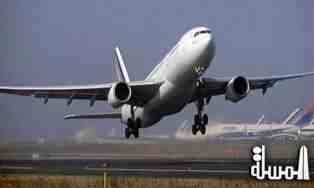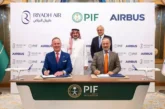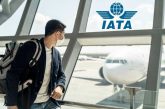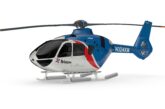
COMMENTARY: US white paper on Gulf carriers distorts my academic report
ATP- arab tourism portal- As the author of an academic research paper that was quoted a number of times in a US airline-commissioned 55-page white paper entitled “Restoring open skies: the need to address subsidized competition from state-owned airlines in Qatar and the UAE”, I would like to address a number of issues pertaining to the report.
I feel that my views were inaccurately interpreted and skewed to serve objectives unrelated to my paper. In particular, I wish to stress the following points:
First, the white paper report quotes from page 30 of my report — “The rise of the Arabian Gulf carriers: an insight into the business model of Emirates Airline, Journal of Air Transport Management”- in support of the alleged subsidization of Emirates Airline and its related managerial practices that “this multifaceted management role…can press the airport to act in the best interests of the country’s flag carrier.”
.jpg)
My academic paper reads directly as follows: “This multifaceted management role allows for cost synergies and pressurizes airports to act in the interests of airlines.” The passage quoted in the academic paper does NOT state the words “can press the airport to act in the best interests of the country’s flag carrier”. The passage in question was referencing the fact that these lower landing charges are passed onto ALL airlines “to act in the interest of airlines”, (which was omitted) and how Emirates Airline and Dubai airport work together to induce synergies.
.jpg)
These entities are separated in the UK, which ultimately adds costs for airlines that land there. This legitimate symbiosis of aviation partnerships in the UAE allows strategic agendas to become fused and seamless; in fact, this entrepreneurial approach has helped attract more than 140 airlines to Dubai. In the UK, the lack of vertical governance between airlines and airports, as well as the significant transaction costs of regulation implemented by the CAA, adds layers of complexity and bureaucracy when attempting to induce forward strategic visions and blueprints for future development.
.jpg)
For 50 years the debate about a third runway at London Heathrow has been plagued by indecisions, prevarications and delays. The UK’s only hub airport operates at 98% capacity, severely restraining the UK from being a global economic power in a tripartite ensemble of trade, financial services and tourism. This myopic political vision is surprising when conceptualizing that there are only six airports in the world that have more than 50 long-haul routes -Heathrow, Dubai and New York JFK among them. British Airways’ stellar approach to this restrictive airport infrastructural dilemma should be commandeered as its open mindset categorizes encroaching competition as another layer of rivalry that needs to be challenged and contested through the mechanisms of effective strategic and marketing management.
![]()
Secondly, the duty free facility that can cross-subsidize cheaper landing charges for airlines is a commonplace strategy adopted by airports worldwide. Interestingly, this single-till approach has been formally advocated by the UK Competition Commission, which claimed that a dual-till arrangement (i.e. a break-up of such cross-subsidization policies) could result in “a substantial transfer of income to airports from airlines and/or their passengers, potentially undermining regulatory credibility and creating regulatory uncertainty”.
Airports are becoming more commercially minded as they increase their dependence on non-aeronautical revenue streams such as retail and car parking. This commercial practice is spearheaded by Middle East-based airports as the ACI Airport Economics Survey declares that Middle Eastern based airports derived the highest proportion of their non-aeronautical revenues from retail concessions registering 61.2% in 2012, while US-based airports garnered just 7.7%. Duty free revenues generated $6.24 per passenger at Middle East airports in 2012, the highest in the world, against $0.12 earned per passenger at US airports. This induced revenue stream from the non-aeronautical category of the business assists the Middle East airports in being able to offer lower aeronautical charges for ALL carriers, stimulating increased traffic volumes which cascades into economic prosperity.
Korea’s Incheon airport, for example, derived around 64% of its total airport revenues from non-aeronautical activities in 2012, as reported by CAPA. However, the relationship between the airline and airport stakeholders remains tense due to increased pressure on airports not to raise aeronautical charges – subsequently the aeronautical share of the revenues of the world’s airports have remained relatively constant at between 54%-56% from 2008 to 2012, as illustrated from the ACI Airport Economics reports. The widespread use of airport discounts on aeronautical charges to encourage traffic growth and regional economic prosperity through trade and tourism has put additional pressure on aeronautical revenues with San Francisco International (SFO) for example offering 100% discount on landing fees for up to 24 months for any non-stop international route not currently served from SFO. California’s $2.1 trillion economy would position it as the 9th largest economy in the world on par with the economy of Russia – the airport’s mandate appears clear in that it wishes to substantially grow its international footprint as it has around 54 of the Fortune 500 companies domiciled in the Golden state. The US airports are fortunate as the Passenger Facility Charge (PFC) collects $4.50 per enplaned passenger which is used to fund improvement and expansion projects. However it adds around 3% to the average cost of a domestic ticket. The GAO-15-107 states that around $2.8 billion in PFCs were collected in 2013 but from 1990 through to August 2014, FAA approved airports’ requests to collect around $89 billion in PFCs to develop infrastructural projects, which invariably benefit the travelling public, while over one-third goes to serve interest payments on outstanding debt. In addition US airports enjoy tax free bond financing and generally pay no rent for access to the land together with no property tax. There are now calls by the airport trade associations to increase the fee to $8.50. In the spirit of the white paper, should all this be necessarily interpreted as a hidden subsidization policy?
Thirdly, the US white paper on the Gulf carriers addresses issues raised in my research regarding the labor practices of Emirates. Prolonged strikes have crippled the air transport value chain forcing passengers to shift allegiance to competitors and have a devastating impact on sustaining profitability that could be reinvested into capital equipment.
Lufthansa Group’s annual report for 2014 mentions the word ‘strike’ 91 times, while the Air France 14-day pilot strike in 2014 cost the group around €500 million ($ million) as the ripple effects of the strike also negatively impacted forward bookings.
The powerful French pilots’ union disregarded the fact that Air France recorded some of the highest losses in the global airline industry in 2011, 2012 and 2013 in pursuit of their own directive. Although the right to strike in democratic societies should not be questioned per se, the Middle Eastern culture of forbidding strikes ensures smooth flight operations and continuous service. Expatriate employees have the option to secure employment contracts in these lucrative Gulf States or remain in their domiciled country – the choice is entirely theirs.
An Emirates’ dossier published in 2012 states that it provides additional financial compensation totaling over $500 million to its expatriate workforce in the form of accommodation, children’s education and healthcare – a practice which is commonplace in the UAE. The unit labor cost per ASK in Euro cents for the latest financial year for Emirates and Singapore Airlines are very similar. This is significant as both exclusively use widebody aircraft from the duopoly of the world’s large aircraft manufacturers, while the unit labor cost parity indicates that the Gulf incumbent is subjected to the same productivity challenges as its Asian counterpart.
My academic paper discusses how labor intensive tasks such as ground handling and catering are largely performed by workers from the cheap labor markets of the Indian sub-continent. However, these unskilled jobs can only command a low tiered remuneration contract regardless of the country in question. For example, baggage handlers in the US receive an average of $11.92 per hour according to payscale.com. US President Barack Obama’s legislation is calling for the US federal minimum wage to be increased to $10.10 per hour. At this hourly rate, a US worker with a family of four would need government assistance to be taken above the federal poverty line. According to Reuters, only 6.7% of the US private sector workers were unionized in 2013 which leaves these low-skilled employees disadvantaged in such a democratically enshrined society.
For all the above reasons, I believe that the US white paper report makes false claims on the arguments made by my paper. Lobbying in favor of a stakeholder is understandable in pluralistic modern societies. However, doing so by victimizing and blaming the success of others based on inaccurate statements is a practice of very limited added value to the society.
Dr John Frankie O’Connell is a lecturer at Cranfield University in the UK and a member of the Royal Aeronautical Society.
Source:ATW








